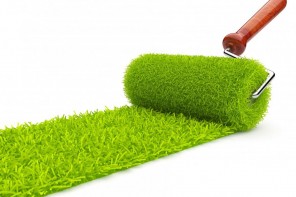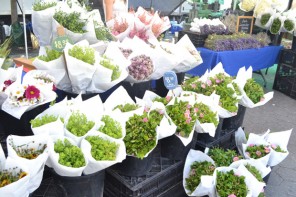A minimalist garden isn’t a specific style of garden – it’s an aesthetic principle applied to gardens based on the “less is more” school of thought. Minimalist gardens are populated with carefully selected plants and unusual materials, all craftily integrated into the vegetation. Geometric shapes and linear movements are defined by hardscapes which corresponds to the architecture of the property.
Smart, low-maintenance gardens
There are many options for those looking to design their own minimalist gardens. People who are looking for a clean, low maintenance and smart garden will find a minimalist garden to be ideal for them. These gardens feature sculptures, architectural planting and beautiful vistas. This all culminates in an area suited for both entertaining and relaxing in. A properly designed minimalist garden will also add extra space to a property as the need for plants is minimal since the intention is to create a structure as much as a garden. This is why artificial materials are used to create a bold, crisp landscape.
Water, lighting and other popular materials
Stainless steel and glass is frequently found in minimalist gardens. The dominion of humanity over nature is deliberately emphasized through these elements. Water elements in these environments are frequently used to emphasize the stark contrast between humanity and nature with a soothing feeling. Water is used to create a calm and sedative atmosphere producing fantastic reflective qualities. Use it sparingly and avoid dominating the garden completely with an overriding water feature.
Lighting is another wonderful architectural tool for creating a desired effect. Use artificial light sources to create both a day and evening garden. People use lighting to down light the garden to alter the garden’s mood during twilight hours of the day. It’s important to maximize the natural light in these types of gardens – not only to help the plants grow, but also to make sure an adequate amount of warmth is added to your space.
Plants are the key ingredient to any minimalist garden and should be a bold feature but should not be relied on too heavily to tie the garden together. Instead, an emphasis should be placed on hard landscape features which will tie the entire garden together.
Using materials to create a desired effect
Steel, concrete and glass are some of the industrial elements featured heavily in many modern minimalist gardens. The industrial aspect of these elements does not mean that your garden needs to be stark or unwelcoming, but a good knowledge of how these materials and elements are utilized to create and realize the desired effect is essential. As an example, use elements in the following way:
- Wood for functionality
- Mirrored panels for ever changing play of light
- Corrugated iron swings for dramatic effect
In a minimalist garden design, the front of the garden should always mimic the back. Carrying on features such as sculptures or water might also be good for continuity. This can also be achieved by strategically placing low maintenance plants that are known for their symmetrical features, such as buxus balls planted tightly together.
What about roof gardens?
Roof gardens are gaining in popularity all over the world. The world’s largest roof garden spans more than 4 hectares and covers the entire roof of the Ford truck factory in Dearborn, Michigan. To some the thought of building a natural oasis on top of a building’s roof might seem a bit outlandish, but in reality roof top gardens have been around for a long time.
The origin of roof top gardens began originally in Europe and has long since grown to become one of the latest trends in gardening. One of the first recorded roof gardens was in Switzerland in 1914 and is now recognised as being extremely beneficial to the environment. These gardens absorb plenty of energy by being on top of a structure and provide natural noise thermal heat insulation, thereby slashing utility bills.
More and more landscapers are adding provide rooftop gardens to their portfolio of services due to the increase in demand. Roof top gardens are a unique emblem of their owner’s creativity and can become a haven in urban city life.
The Live Eco team









